History of the Short-Lived but innovative Latham Axial Flow Supercharger
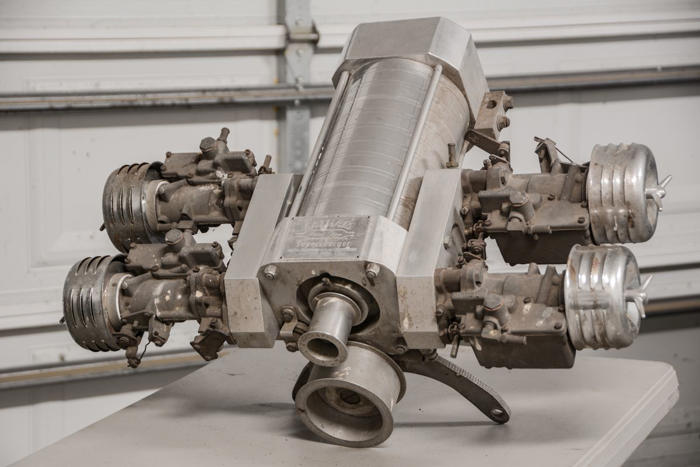
The history of supercharging an internal combustion engine goes all the way back to 1896, when Rudolf Diesel used forced induction on his first diesel engine. The concept of increasing the volume of air was efficient in creating more horsepower, but many refinements would take place during the first half of the 20th century. Superchargers became common in Indy car racing in the 1920s, and this accelerated the innovation, as automobile manufacturers spared no expense to come out on top at Indianapolis. While supercharging was originally intended for racing use, the 1950s saw a huge increase in supercharger availability with an eye toward street cars.
Roots superchargers became common with the introduction of the Detroit Diesel Series 71 in 1938, and this two-stroke diesel engine remained in service for many years in all sorts of heavy-duty applications. With some thoughtful modification, the Detroit (commonly known as GMC) superchargers could be adapted to a V8 engine. The aftermarket soon picked up on the trend, offering custom-made supercharger systems, such as the Italmeccanica S.Co.T. blower, which saw use on Ford Flathead V8 engines. Centrifugal superchargers offered another option, and companies like Frenzel and McCulloch led the charge with this alternative design, which used belt-driven impellers inside of an aluminum housing to force air into the carburetor. In the 1950s, turbocharging had not yet caught on as a suitable option in the hot rod world, but it was a time of great experimentation.
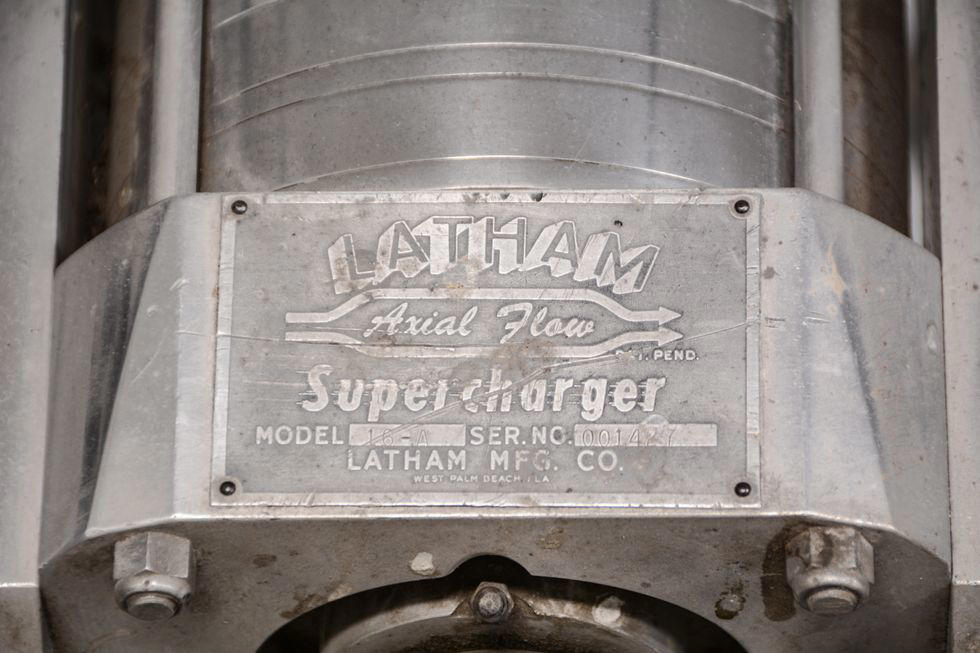
Whether you liked your forced induction to be spun by an impeller or smashed by rotors, superchargers were gaining notoriety quickly, thanks to automotive magazines that touted the immense horsepower increases. In 1956, a new player entered the market with a relatively new concept. Norman Latham of West Palm Beach, Florida started Latham Manufacturing Company, and his product drew the attention of magazine editors around the world. Known as the Latham Axial Flow Supercharger, this product took forced induction another step further by increasing efficiency and creating multi-stage housings for usage on many engine platforms.
The world first saw the Latham Axial Flow Supercharger in the June 1956 issue of HOT ROD Magazine, and then later saw it in other magazines, including Motor Trend, Rods Illustrated, Speed & Custom, Rodding & Restyling and many more. Multi-page articles often remarked about the supercharger system’s efficiency and horsepower increases, but also spoke of its high price, which may be the reason Latham only produced approximately 650 units in its nine-year production run (1956 to 1965).
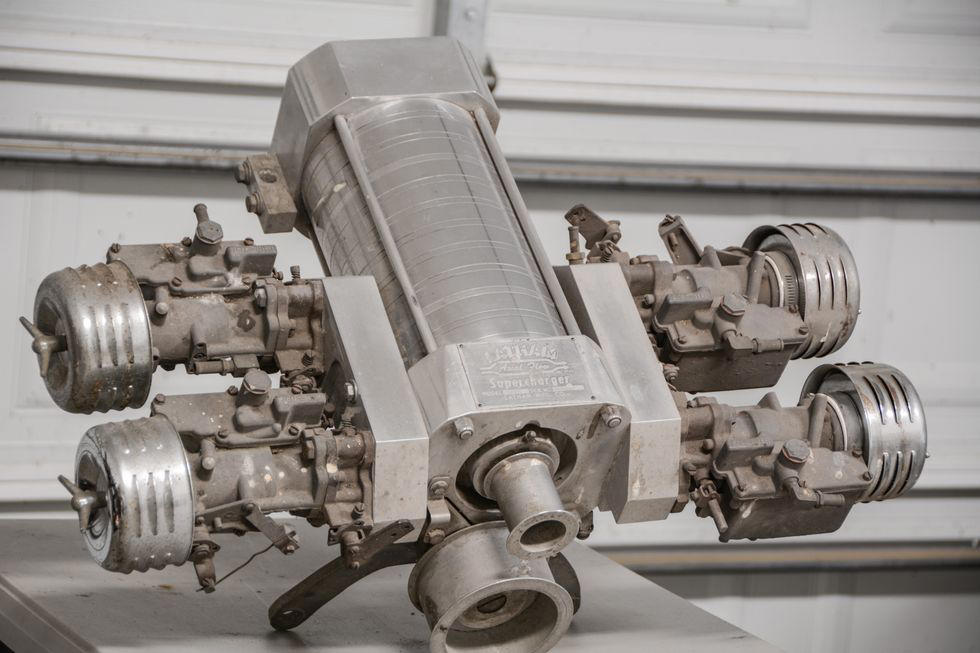
Norman Latham designed the axial flow supercharger to operate at high rpm by aerodynamically compressing air in a straight line. It moved air by way of 363 curved blades on a stator that spun inside of the machined aluminum housing. The movement came from a 1-1/8-inch-wide flat belt with no grooves or teeth for traction, and only the top pulley had a lip to keep the belt from sliding off. The wow factor that comes with the Latham supercharger is the outrageous pulley ratios. Many systems used a 4.5:1 or greater pulley ratio, meaning that the bottom pulley, attached to the crankshaft would be 4.5 times larger than the supercharger pulley. In extreme cases, pulley ratio neared 6:1. Even then, boost pressures were not extravagant, and typically maxed out at around 8 psi on a typical V8 engine. A byproduct of the wild pulley ratio was the intense whine from the supercharger, as it spun so much faster than the engine. The units were tested at 40,000 rpm, but most often ran at 30,000 rpm on a typical 5:1 pulley ratio.
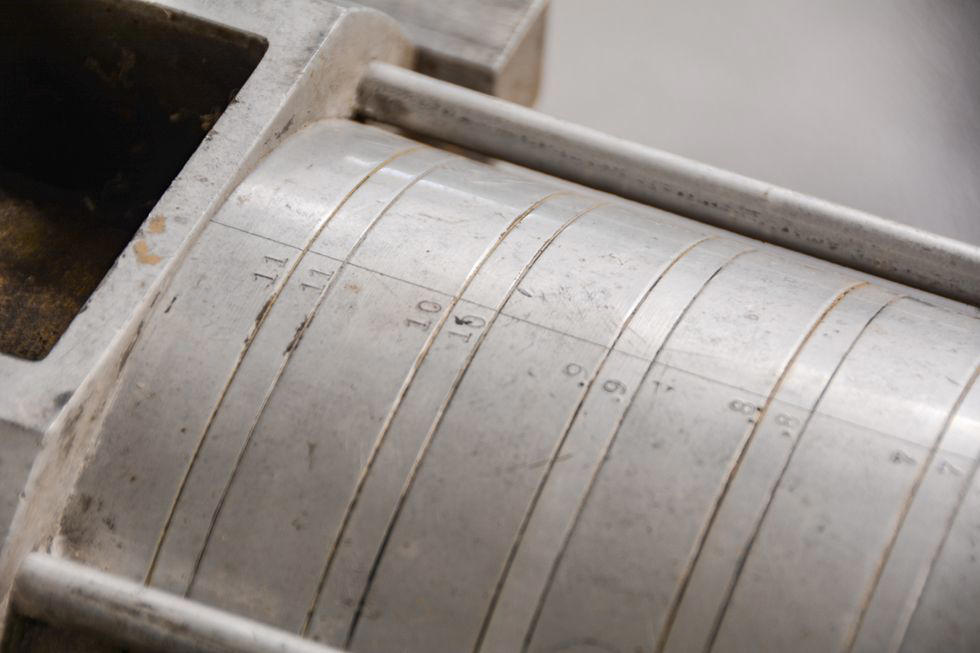
Another unique aspect of the Latham supercharger is its carburetion. Small units used a pair of Carter YH side draft carburetors, while more aggressive units used four Carters. There have been variations of the carburetor setup, but the original side-draft Carters offer a wild appearance when the unit is placed atop an engine. Unlike a Roots supercharger, the Latham axial flow supercharger has a small rectangular outlet at the rear of the housing, and it could be mated to nearly any four-barrel intake manifold with a custom adapter. This positioning provides a unique appearance, as the supercharger housing hangs off the front of the engine. Most kits came with a bracket that bolted to the water pump for added support. A spring-loaded belt tensioner and custom throttle linkage for the YH carburetors were also part of the system. Add-on items included a boost gauge, emblems, decals and belt dressing.
Later on, Latham Superchargers were available for more than a dozen engine platforms and Norman Latham worked out a deal with Edelbrock to cast a custom intake manifold for Ford’s new FE engine around 1960. This would be the only complete intake manifold offered by Latham. The intake featured the rectangular flange and the necessary studs for mounting the supercharger. A low-profile Mallory distributor was mandatory for installation on Fords, due to the front-mounted distributor, directly under the supercharger housing.
With kits for Corvettes, Thunderbirds, and even Mercedes 300SL, one would think that Latham Axial Flow Superchargers would’ve been flying off the shelves. The amount of media attention was unlike any other supercharger of the era, but the notoriety didn’t equal great sales. It is estimated that only around 650 superchargers were produced from 1956 to 1965. Make no mistake, these were high end units with an extensive amount of machining required to make it all work. When Norman stopped producing the complete kits, he still held onto the patterns and materials, and continued to produce parts as needed. Ultimately, he sold the materials to Richard Paul in 1982. Richard went onto produce more superchargers, and even developed a kit for ‘80s GM F-body cars, in an attempt to bring axial flow superchargers back into the market. He updated to Weber carburetion and even toyed with electronic fuel injection.
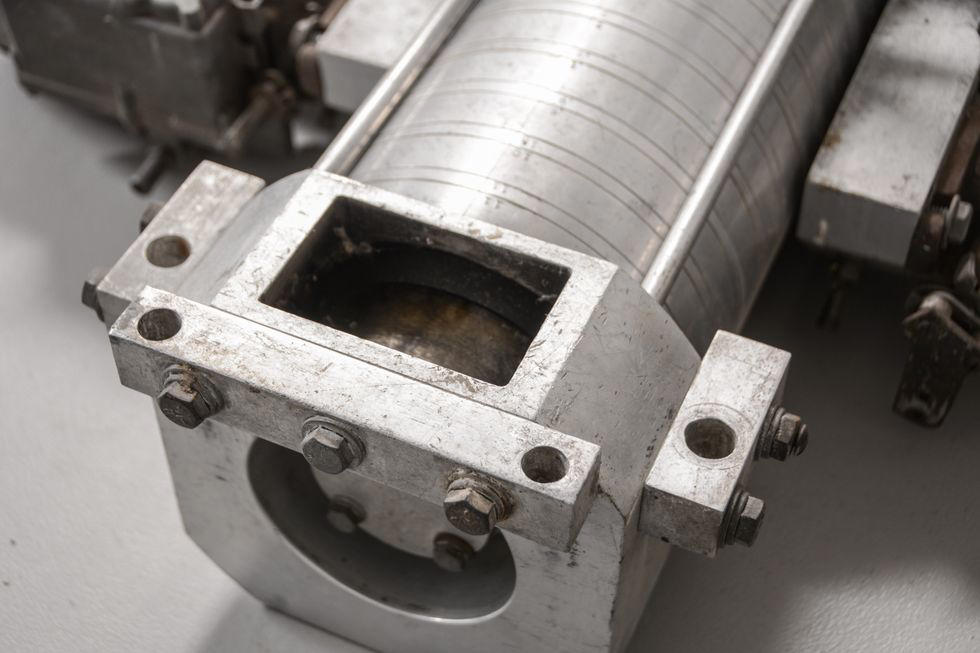
Though Latham Axial Flow Superchargers didn’t turn into an overnight success story, the exotic design is a fascinating example of 1950s hot rod innovation. The specific unit we’re featuring is a true survivor, as it is a complete kit, fresh out of long-term storage. Every Latham supercharger came with a riveted plated on the housing, designating the model number and serial number. This one is a 16-A unit, built with 11 stages, which is the largest offering from Latham. The serial numbers feature a six-digit code, which typically start with 001 and end with a three-digit number of production. This example is serial number 001427, meaning it was the 427th unit produced, which places it around 1962 or so in the overall production run. It was built for a Ford FE engine, and was ordered with the custom aluminum intake manifold, one of just a few that are known to exist. Other items in this system include the belt tensioner, carburetors, linkage, giant crank pulley, and an aluminum single-groove water pump pulley. The only missing component is the belt.
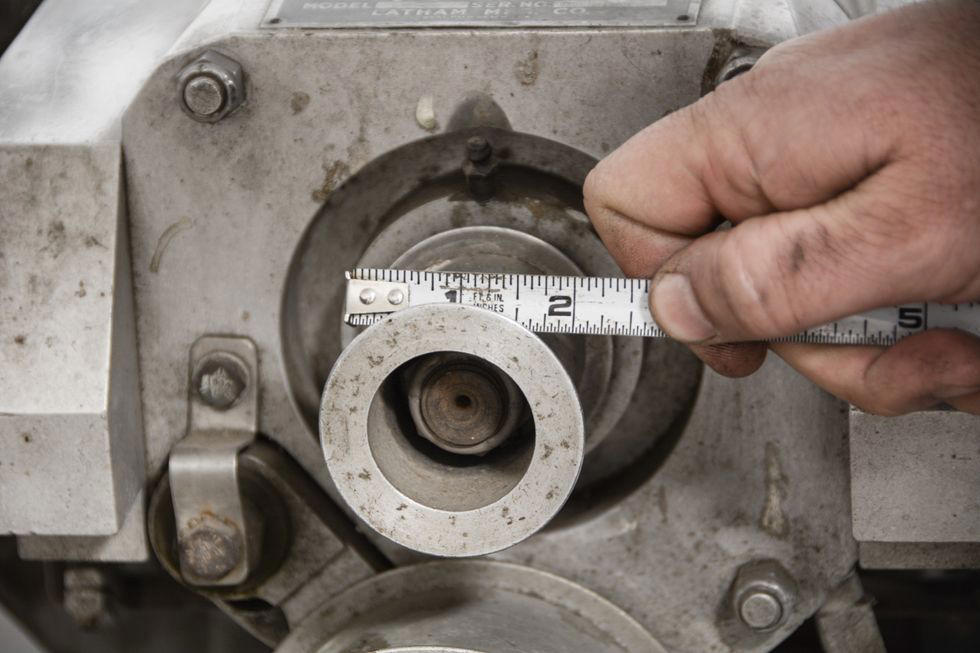
We were thankful to get our hands on Latham Supercharger #427 and it sent us on a research journey to uncover all the details of these unique superchargers. Luckily, reference material is plentiful, thanks to the multitude of magazine articles published in the 1950’s and 1960’s. Take a look at our photos of the details on this Latham Supercharger and always keep your eyes peeled at swap meets, in case one of the 650 units happens to pop up for sale. Restored units can be valued north of $10,000, but it’s hard to put a price tag on the wow factor of these extremely rare pieces of hot rod history.
Latham Supercharger Components
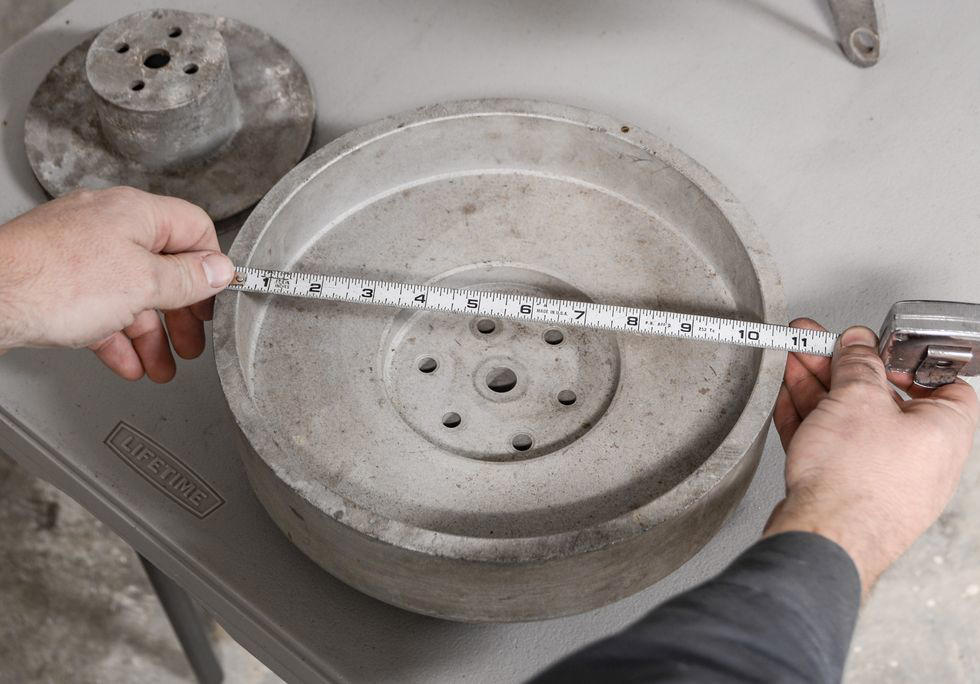
The aluminum lower pulley measures 10-5/8 inches in diameter, which makes the blower drive ratio a little north of 6:1. That means if the FE engine was spinning 5,000 rpm, the blower was turning 30,000 rpm.
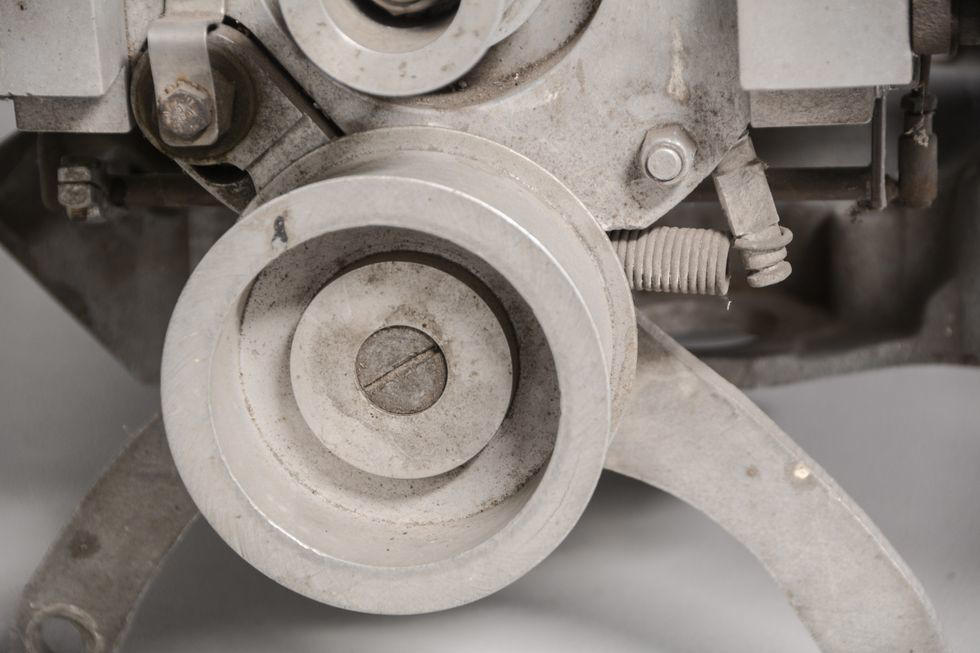
An idler pulley on a spring-loaded tensioner kept tension on the flat belt, but one can only assume that belt slippage was an issue with a flat, un-grooved belt.
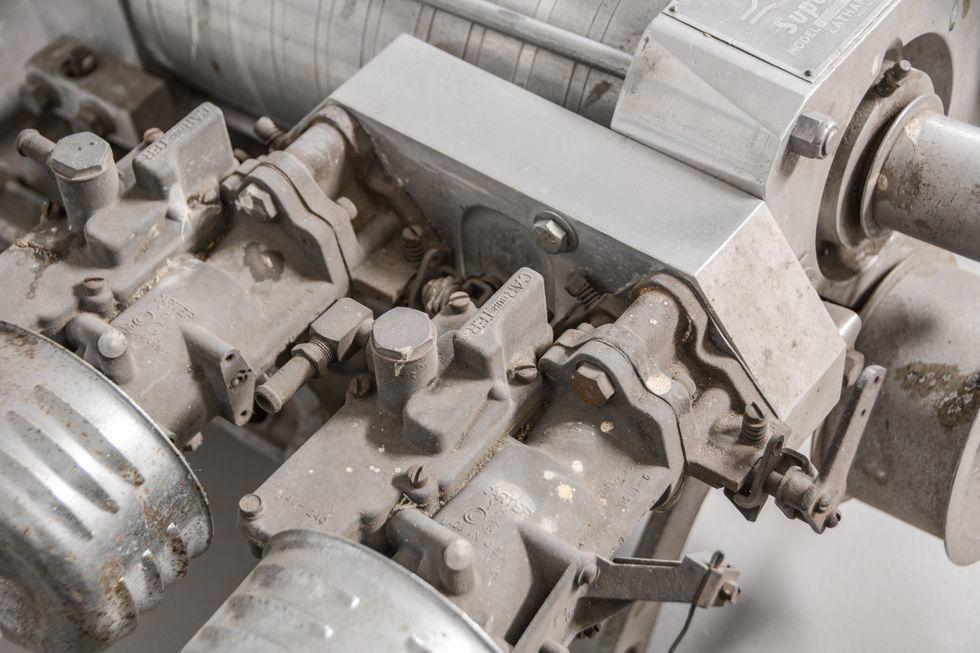
Smaller Latham units used a pair of Carter YH carburetors, while the larger units commonly used four carburetors. These were off the shelf carburetors, commonly used on turbocharged Corvairs, early Corvette six-cylinder engines, and select Nash engines.
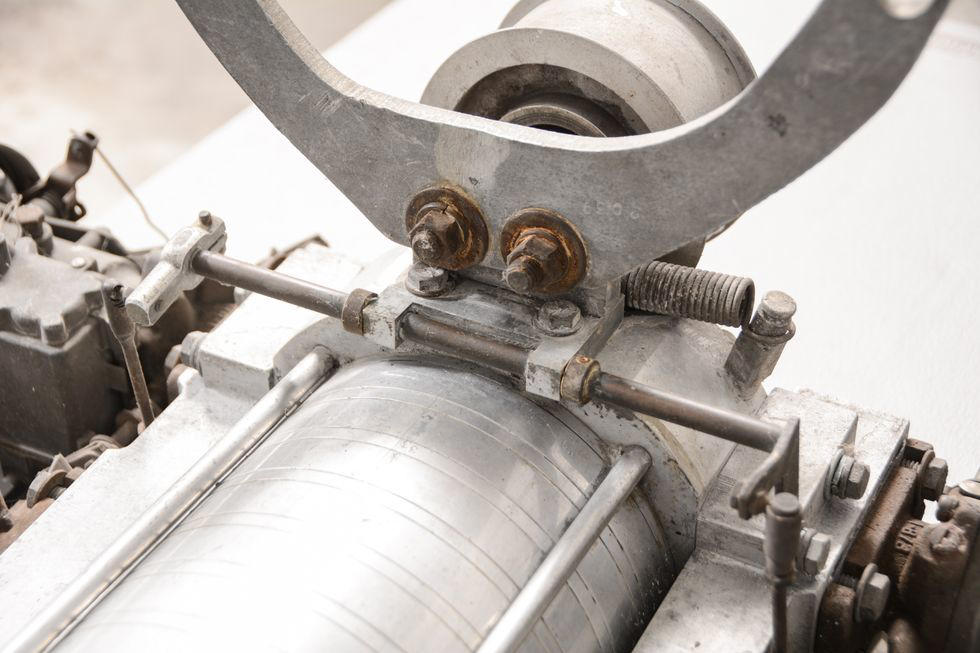
Custom throttle linkage operates all four carburetors and offers clean installation underneath the blower housing. Every piece of a Latham supercharger unit was fabricated or machined with great precision.
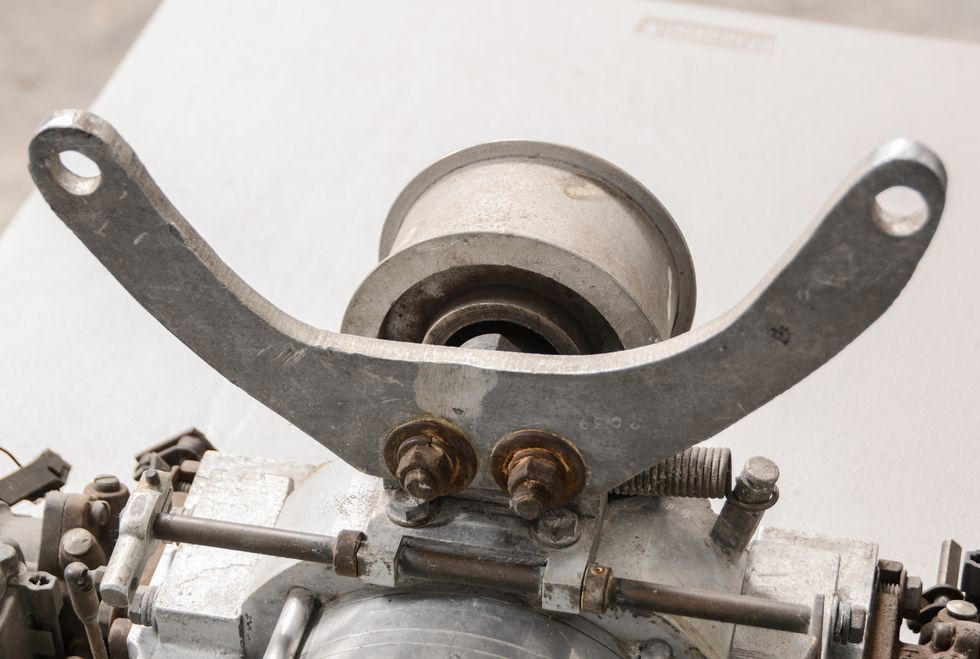
The crudest part of the Latham unit is the front support bracket. It is milled out of thick aluminum, and it features a two-bolt arrangement on the supercharger and a two-bolt arrangement that often bolted to the water pump or the front of the block.
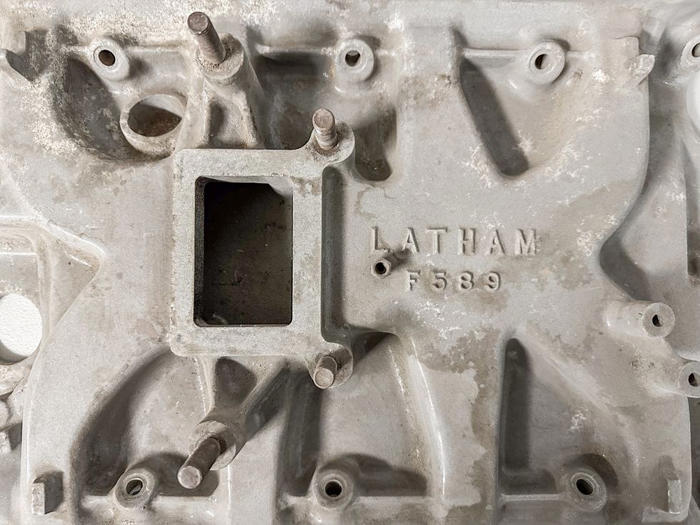
Perhaps the rarest item in the Latham catalog is the F589 intake manifold, a bespoke piece for Ford’s FE platform. It was a co-op deal with Edelbrock, although it has no Edelbrock markings. The intake features the rectangular flange and four-stud mounting arrangement for the back of the supercharger.
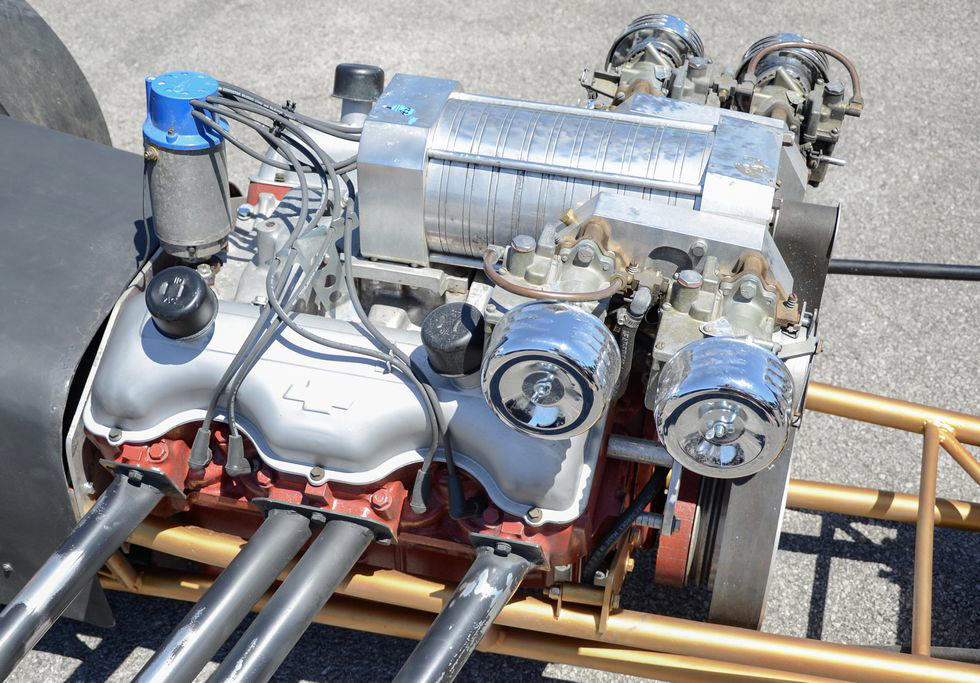
One of the few functional examples of a Latham Supercharger is seen on Mike Prestas’ front engine dragster. The 409 Chevy engine uses an aluminum single four-barrel intake manifold and a special adapter.
